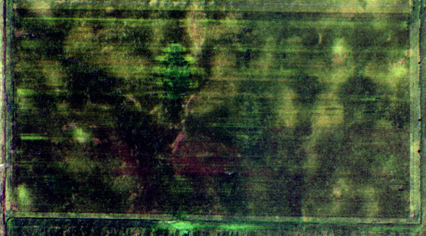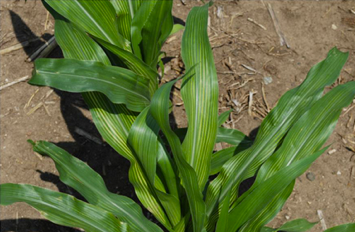The use of granular urea is fairly low compared to anhydrous ammonia (NH3) or UAN. In On-Farm Network evaluations, the number of farmers who have tested urea is so low that we don’t have good comparisons over a number of years, so it’s not possible for us to talk about the long term odds with the product.
However, a few of our long-time cooperators agreed to put out trials this year using a urea product called ESN Environmentally Smart Nitrogen, which has a coating designed to delay N availability. These trials gave us some very interesting results. The type of information generated is the reason we named this newsletter the ADVANCE.
|
|
This issue focuses on two of our replicated strip trials that compared alternating strips of fall NH3 and spring-applied ESN. Both treatments received the same rate of N per acre and the light spring tillage required to incorporate the urea was used across the field. As in all trials of this nature, the same hybrid, planting rate, herbicide, etc., was used for all strips.
Before the corn was waist high, all the growers who put out this trial reported seeing yellow corn in the ESN strips in the field from the road as they drove by.
Our first thought was that the combination of hot, dry conditions and the delay in N availability from the ESN could have resulted in an early N shortage. However, walking through the fields there was definitely a significant difference between the treatments, but little or no signs of N stress.
|
|
There were very pronounced visual symptoms of sulfur deficiency in the ESN strips (see photo on right). We were not expecting this. We covered this in our June 28 ADVANCE and promised a follow-up this fall.
In investigating further, we verified with the growers that there were no other differences in applied fertilizer or other products between the strips that could have added different amounts of sulfur.
We also pulled leaf samples from both the NH3 and ESN strips for tissue testing. While both sets of strips had adequate N, the fall NH3 strips tested somewhat lower in N, but higher in S than the ESN strips.
Shortly after we inspected the fields and pulled the leaf samples for testing, all of the fields received varying amounts of rain. After the rain, the growers all reported that the visual differences between the strips disappeared. However, in late season aerial imagery of the fields (top photo), we were able to see differences in the strips that followed the patterns seen earlier in the season.
Combine yield monitor data from two trials shows a 5.6 bu./acre difference in one and a 10.8 bu./acre difference in the other, both favoring fall NH3. We do not know if this was due to a single factor (heat, drought, product, etc.), nor can we say whether we’d see the same results in similar trials next season.
What we can say definitively is there was a difference this year that most people would not have expected. We’ll continue to follow this subject and report any additional results or information we find that might help explain what we saw in these trials.
Watch our website for final results of these and other On-Farm Network replicated strip trials and guided stalk nitrate sampling.

 Darker colored stripes across the north half of this field are the replicated strips that received a fall application of NH3, while the lighter colored strips received a spring application of ESN.
Darker colored stripes across the north half of this field are the replicated strips that received a fall application of NH3, while the lighter colored strips received a spring application of ESN. Yellow striping like this on corn leaves on plants in these trials indicates sulfur deficiency.
Yellow striping like this on corn leaves on plants in these trials indicates sulfur deficiency.




Post a comment
Report Abusive Comment